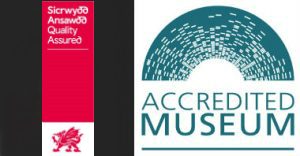A ‘works’ School was built in 1846; a Church and numerous terraces of housing can all still be seen today.
The survival of the Hafod or “Trevivian” is remarkable and constitutes a complete copperworkers’ township of the Victorian period.
By 1823 the Swansea Valley’s various copperworks (together with coal and shipping interests) supported 10,000 out of an entire population of approximately 15,000.
Swansea was indeed “Copperopolis”. By 1886 Vivian & Sons employed three thousand people, one thousand of them at the Hafod.
The Hafod Works produced copper in bars, ingots, sheets, tube, rod, bolts, circles, sulphate of copper, yellow metal and condenser plates.
It also produced naval brass, ferro-bronze, lead ingots, spelter, silver, gold, sulphuric acid, zinc chloride and superphosphate fertilisers.

